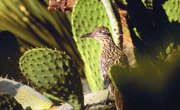
Some birds are skilled builders, with the ability to construct their nest using mud as a primary resource. While some will build their nest entirely out of mud, others will mix in other materials, with the mud drying and reinforcing the entire structure. Among the most common birds that employ mud to make a nest are several members of the swallow family.
Cliff Swallow
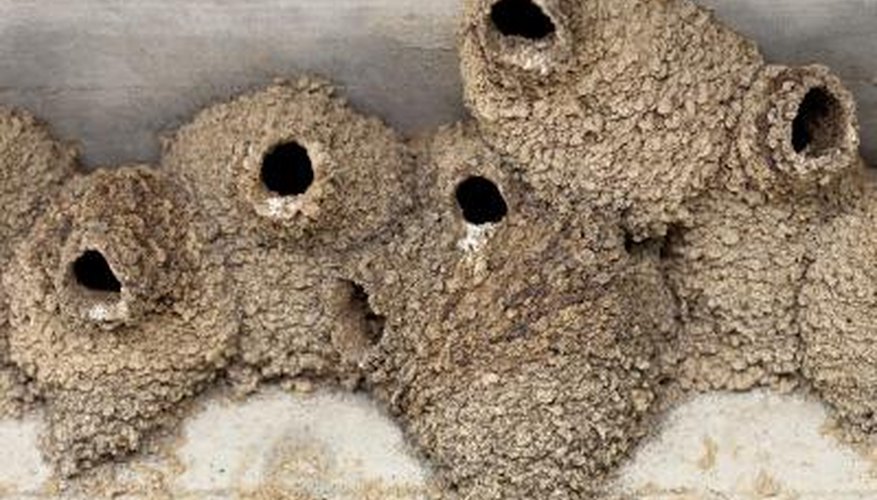
Melinda Fawver/iStock/Getty Images
The mud nest of the cliff swallow looks like an upside-down igloo, with the entrance near the top for the bird to gain access. The cliff swallow creates this “covered bowl” out of mud pellets, according to the Cornell Lab of Ornithology website. The location of the nest is typically on a vertical wall, with some sort of overhang protecting the bird’s home. The cliff swallow then lines its mud nest with grasses. Cliff swallows build large colonies, with their nests all in close proximity to one another.
Barn Swallow
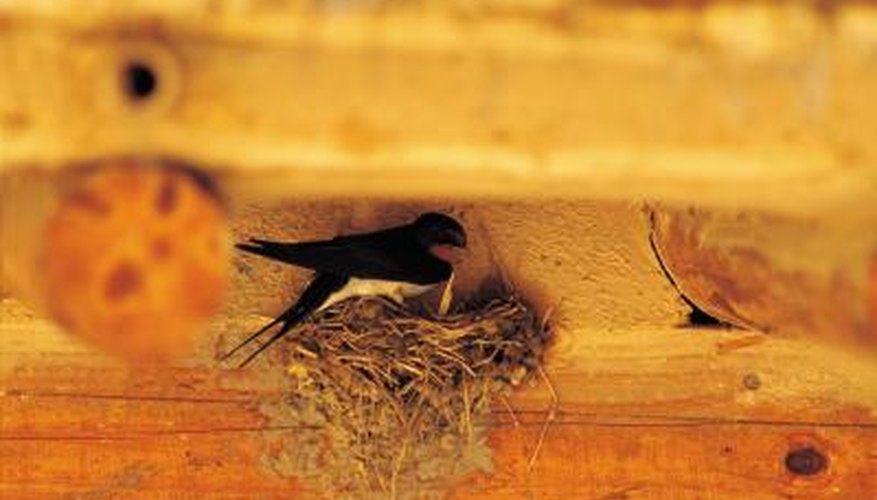
Photos.com/Photos.com/Getty Images
The barn swallow will select a site such as a rafter of a ledge that has shelter from the elements. The barn swallow includes grass with the mud when making the nest, shaping it into a cup, with the top open. The barn swallow is one of the few species of birds to benefit from the presence of people. The swallow expanded its original territory, using manmade structures as places to build its nest. The barn swallow’s numbers are higher than when settlers first came to the New World.
Flamingo
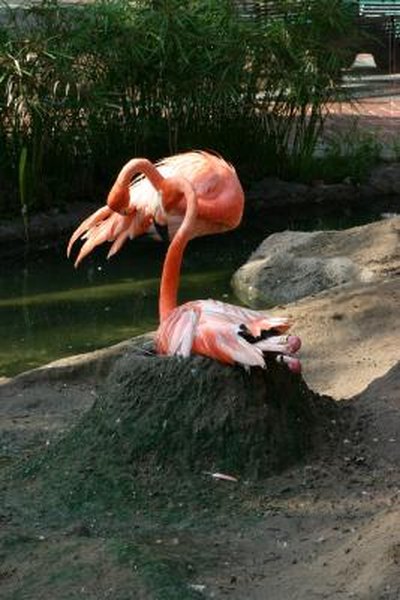
LeRoy Gunderson/iStock/Getty Images
The flamingo does not construct a mud nest as much as it merely shapes one into existence, using its large bill to pull mud near its feet and into a mound. The San Diego Zoo website notes that the males and females both engage in this activity until a mound of mud as tall as a foot exists. The flamingo’s mud nest serves two important functions. The mound keeps the bird’s lone egg dry when flooding occurs. The nest also is high enough off the ground in sweltering weather to keep the egg from becoming too hot.
Black-Billed Magpie
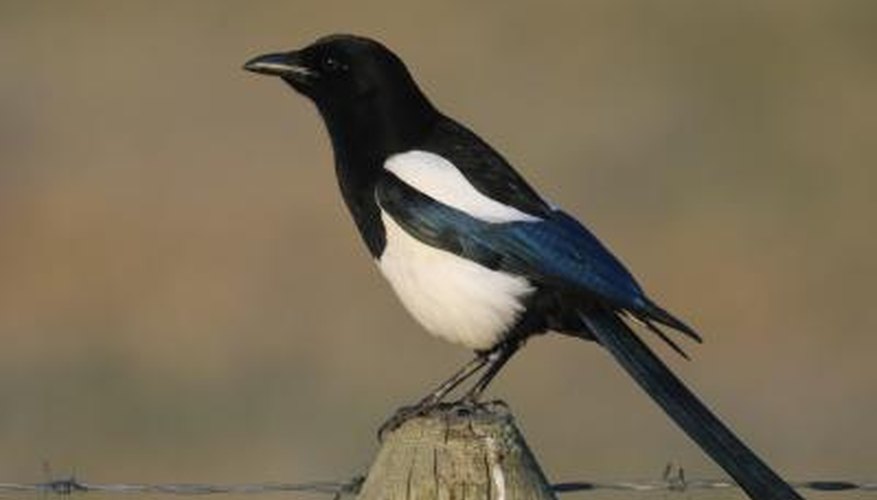
bgsmith/iStock/Getty Images
The black-billed magpie uses mud as a material to hold together its nest, which also includes sticks. Once the magpie completes this construction--a task that can take the male and female as long as 40 days--the bird lines it with animal hair, grasses, strips of bark and tiny rootlets. The black-billed magpie chooses a stump, tree or a telephone pole as the place to build its nest.
References
- The Cornell Lab of Ornithology: All About Birds: Swallows
- San Diego Zoo: Birds:Flamingos
- The Cornell Lab of Ornithology: All About Birds: Black-Billed Magpie
- "National Audubon Society Field Guide to Birds"; John Bull and John Farrand Jr; 2008
Writer Bio
John Lindell has written articles for "The Greyhound Review" and various other online publications. A Connecticut native, his work specializes in sports, fishing and nature. Lindell worked in greyhound racing for 25 years.


